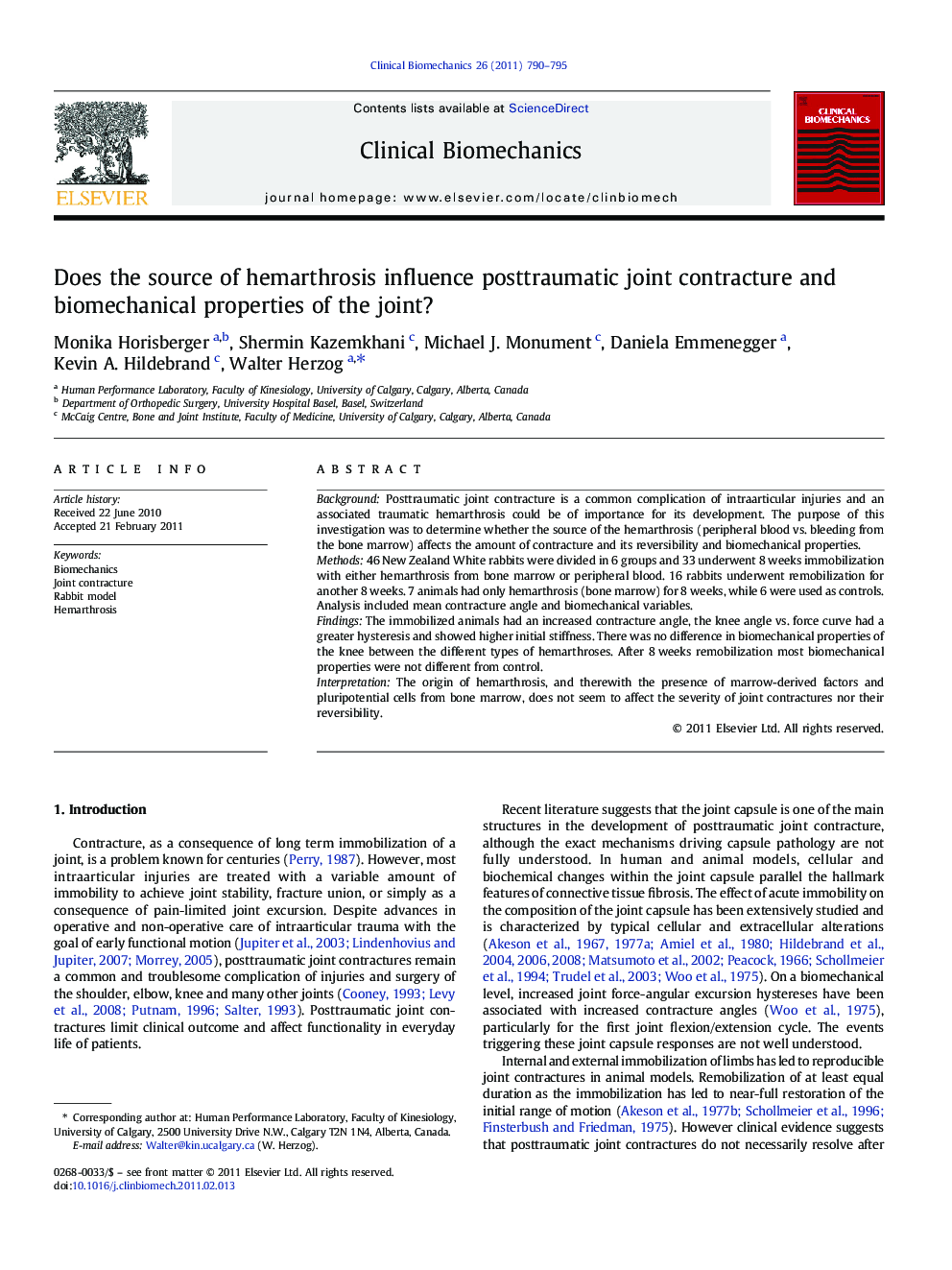| Article ID | Journal | Published Year | Pages | File Type |
|---|---|---|---|---|
| 4050730 | Clinical Biomechanics | 2011 | 6 Pages |
BackgroundPosttraumatic joint contracture is a common complication of intraarticular injuries and an associated traumatic hemarthrosis could be of importance for its development. The purpose of this investigation was to determine whether the source of the hemarthrosis (peripheral blood vs. bleeding from the bone marrow) affects the amount of contracture and its reversibility and biomechanical properties.Methods46 New Zealand White rabbits were divided in 6 groups and 33 underwent 8 weeks immobilization with either hemarthrosis from bone marrow or peripheral blood. 16 rabbits underwent remobilization for another 8 weeks. 7 animals had only hemarthrosis (bone marrow) for 8 weeks, while 6 were used as controls. Analysis included mean contracture angle and biomechanical variables.FindingsThe immobilized animals had an increased contracture angle, the knee angle vs. force curve had a greater hysteresis and showed higher initial stiffness. There was no difference in biomechanical properties of the knee between the different types of hemarthroses. After 8 weeks remobilization most biomechanical properties were not different from control.InterpretationThe origin of hemarthrosis, and therewith the presence of marrow-derived factors and pluripotential cells from bone marrow, does not seem to affect the severity of joint contractures nor their reversibility.
